Anatomy of your TMJ
Your temporomandibular joints (left and right jaw joints) and their attached muscles are the most powerful system in your body. It uses your teeth to chop and grind your food for proper digestion and health. When these joints are dysfunctional, they make eating difficult and they can be painful.
Your TMJs are one of the few joints in the human body with a disc between its two bones—the upper bone is part of your skull and the lower is your jaw bone or mandible (the “M” part of TMJ). The disc allows the joints to move smoothly, even under great pressure. The contact part of the lower jaw with the disc is called the condyle and the skull bone in contact with the disc is called the fossa. The reason for this anatomy lesson is so that you can understand why you are having problems with your jaws
Disorders of your Temporomandibular Joint
The correct term for the pain or dysfunction of your temporomandibular joint is “TMD” for tempormandibular disorder. TMD is complicated and can involve problems with your TMJs, jaw muscles, ligaments, tendons, blood vessels and your neck.
The two most common TMDs are jaw muscle pain and damage to the joint (condyle, disc and fossa). Muscle pain disorder is commonly caused by jaw muscle hyperactivity, like when you grind or clench your teeth, and is often accompanied by headaches in your temples. It can also be caused by a traumatic injury to your jaw. Joint damage disorders may include disc displacements, wearing of the two bones, or even severe arthritic changes. These disorders are often accompanied by pain in your jaw muscles.
How to tell whether you might have a TMD
You may have a TMD if you can’t fully open your jaws, your lower jaw locks open or closed, or you have joint noises such as clicking, popping and grinding, You may also have a TMD if you have pain in your jaw muscles, headaches in your temples or pain and stiffness in your neck.
Examination of your possible TMD
Your TMJ exam should include a thorough medical and dental history along with a description of your symptoms. It should also include a clinical examination of your teeth and bite, a range of motion evaluation of your TMJs, and an evaluation of jaw muscle tenderness.Sometimes your TMD diagnosis can be made from a clinical examination alone, but often x-rays of the jaw joints and diagnostic mounted models of your teeth are needed to understand the full extent of your problem.
Treatment of your TMD
Treatment can be as simple as taking precautions, such as rest and soft food diet to let your joints heal themselves. Sometimes pain medications like Ibuprofen will give you some pain relief, sometimes not. Sometimes physical therapy can help relieve your severe muscle pain or joint problems. Often occlusal splints are needed if you have a more complex problem that cannot be resolved by simple means. You might find an occlusal splint very effective for pain relief, and it can aid in the positioning your lower jaw to improve function and lessen the recurrence of your symptoms. If you feel that what you have read here implies that you have a TMD, then we suggest you make an appointment to find out how severe it is and what we can do about it.


